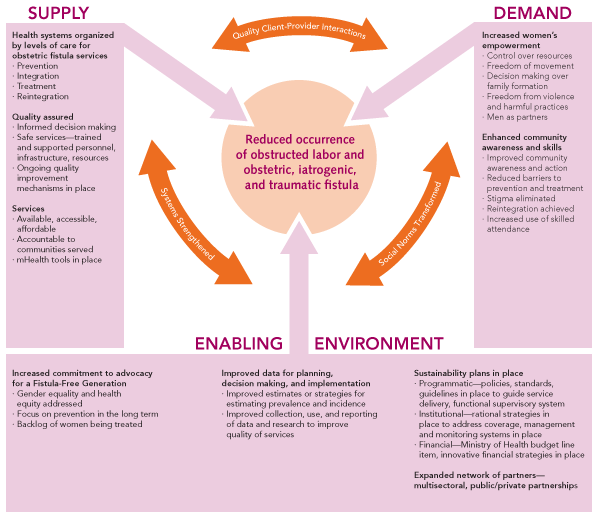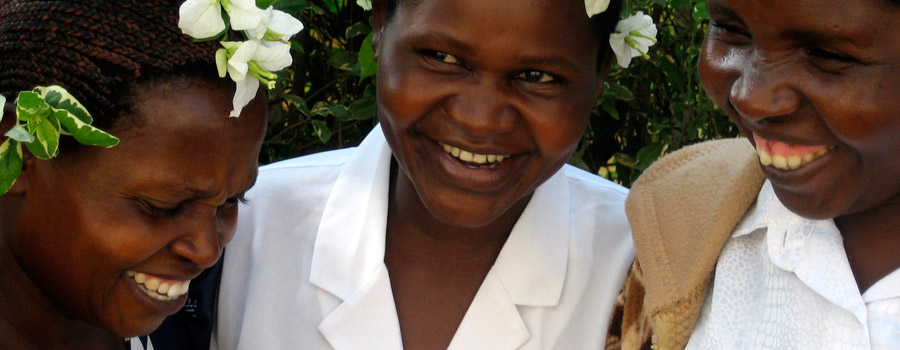Increasing Access to Fistula Services :
Organization of Services
Fistula Care adapted for its work EngenderHealth’s Supply–Enabling Environment–Demand (SEED) approach to holistic programming for reproductive health interventions.
The ultimate objective was to reduce the occurrence of obstructed labor, obstetric fistula, and related morbidities. Figure 1 provides a visual summary of this programming model, which has evolved over time.

To address these issues, in 2008 Fistula Care proposed and began to implement a national, triaged approach to obstetric fistula prevention and treatment: the Levels of Care Framework. This framework applies a systems approach to the continuum of care: prevention, treatment, and reintegration. Prevention must be integrated at all levels of the health system and at the community level. Ultimately, strengthened prevention will be the solution to obstetric fistula. At the prevention level (Level 1), in addition to creating awareness at both the community and facility levels, there is also a need to provide services to ensure planned pregnancies, safe births, and good postpartum care, as well as treatment by catheterization. Facilities at this level should be able to make a preliminary diagnosis of fistula and be able to treat adjunct conditions such as malnutrition, anemia, foot drop, prior to referral. Cases requiring surgical treatment are identified and referred.
Treatment (Level 2) must be provided at a facility or during outreach, with the requisite equipment, supplies, drugs, and skilled surgical team. Maintaining and improving surgical skills requires a reasonable caseload. Treatment requires long hospital stays with quality pre-, intra-, and postoperative care. Treatment centers should be strategically located to ensure that women from all parts of the country have access to care, with transportation support.
For the most complex cases, advanced surgical skills may only be available in a few specialist centers in a country (Level 3). At these centers, care for women whose fistula is deemed incurable may also be provided, and training can be supported. Follow-up and reintegration can be provided through linkages at all levels. There remains work to be done to fully implement this approach.
This section of the archive includes curricula and training modules covering important aspects of fistula service delivery, evaluation and research studies which examine service delivery models, project and meeting reports with recommendations for the organization of services, technical briefs that describe innovative service delivery models for fistula prevention and treatment, and tools for assessing and monitoring training and clinical services.
View the Resources and Tools.
![[ Skip Navigation ]](../../data/images/c.gif)



